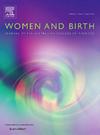孕妇吸电子烟与妊娠不良后果:系统回顾和荟萃分析
IF 4.1
2区 医学
Q1 NURSING
引用次数: 0
摘要
怀孕期间越来越多地使用电子烟引起了人们对尼古丁暴露风险的担忧。本荟萃分析评估了与不吸烟者、吸烟者和双重使用者(电子烟和可燃烟草使用)相比,母亲吸电子烟与早产、低出生体重和小胎龄之间的关系。方法按照PRISMA指南进行系统评价和荟萃分析。PubMed、Web of Science和Cochrane Library检索了从1986年8月到2024年12月发表的研究。符合条件的研究包括使用电子烟的孕妇,报告的结果是早产、低出生体重或胎龄小。比值比(or)为95% %的置信区间(ci)采用固定效应或随机效应模型进行汇总。结果9项研究纳入423,680名孕妇,符合纳入标准。与不吸烟者相比,使用电子烟与早产风险增加40% % (OR = 1.40, 95 % CI: 1.25-1.58),低出生体重风险增加49% % (OR = 1.49, 95 % CI: 1.32 - 1.69)和胎龄小风险增加32% % (OR = 1.32, 95 % CI: 1.17-1.48)相关。在早产和低出生体重方面,电子烟使用者和吸烟者或双重使用者之间没有发现显著差异。然而,与双重使用者相比,电子烟使用者的小胎龄风险降低了47 % (OR = 0.53, 95 % CI: 0.42-0.66),风险降低了67 % (OR = 0.33, 95 % CI: 0.18-0.61)。结论:与不使用尼古丁相比,怀孕期间使用电子烟与早产、低出生体重和小胎龄的风险显著增加有关。本文章由计算机程序翻译,如有差异,请以英文原文为准。
Maternal vaping and pregnancy adverse outcomes: A systematic review and meta-analysis
Background
The increasing use of vaping during pregnancy raises concerns due to known risks of nicotine exposure. This meta-analysis assesses the association between maternal vaping and preterm birth, low birth weight, and small-for-gestational-age, compared to non-smokers, tobacco smokers, and dual users (both vaping and combastible tobacco use).
Methods
A systematic review and meta-analysis was conducted following PRISMA guidelines. PubMed, Web of Science, and Cochrane Library were searched for studies published from Auguts 1986 to December 2024. Eligible studies included pregnant women using vaping, with reported outcomes on preterm birth, low birth weight, or small-for-gestational-age. Odds ratios (ORs) with 95 % confidence intervals (CIs) were pooled using fixed- or random-effects models.
Results
Nine studies involving 423,680 pregnant women met the inclusion criteria. Compared to non-smokers, vaping use was associated with a 40 % increased risk of preterm birth (OR = 1.40, 95 % CI: 1.25–1.58), a 49 % increased risk of low birth weight (OR = 1.49, 95 % CI: 1.32–1.69), and a 32 % increased risk of small-for-gestational-age (OR = 1.32, 95 % CI: 1.17–1.48). No significant difference was found between vaping users and smokers or dual users for preterm birth or low birth weight. However, vaping users had a 47 % lower risk of small-for-gestational-age (OR = 0.53, 95 % CI: 0.42–0.66), and a 67 % lower risk compared to dual users (OR = 0.33, 95 % CI: 0.18–0.61).
Conclusion
Vaping during pregnancy is associated with a significantly higher risk of preterm birth, low birth weight, and small-for-gestational-age, compared to non-use of nicotine.
求助全文
通过发布文献求助,成功后即可免费获取论文全文。
去求助
来源期刊

Women and Birth
NURSING-OBSTETRICS & GYNECOLOGY
CiteScore
7.20
自引率
13.20%
发文量
371
审稿时长
27 days
期刊介绍:
Women and Birth is the official journal of the Australian College of Midwives (ACM). It is a midwifery journal that publishes on all matters that affect women and birth, from pre-conceptual counselling, through pregnancy, birth, and the first six weeks postnatal. All papers accepted will draw from and contribute to the relevant contemporary research, policy and/or theoretical literature. We seek research papers, quality assurances papers (with ethical approval) discussion papers, clinical practice papers, case studies and original literature reviews.
Our women-centred focus is inclusive of the family, fetus and newborn, both well and sick, and covers both healthy and complex pregnancies and births. The journal seeks papers that take a woman-centred focus on maternity services, epidemiology, primary health care, reproductive psycho/physiology, midwifery practice, theory, research, education, management and leadership. We also seek relevant papers on maternal mental health and neonatal well-being, natural and complementary therapies, local, national and international policy, management, politics, economics and societal and cultural issues as they affect childbearing women and their families. Topics may include, where appropriate, neonatal care, child and family health, women’s health, related to pregnancy, birth and the postpartum, including lactation. Interprofessional papers relevant to midwifery are welcome. Articles are double blind peer-reviewed, primarily by experts in the field of the submitted work.
 求助内容:
求助内容: 应助结果提醒方式:
应助结果提醒方式:


